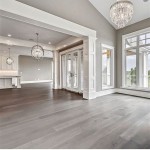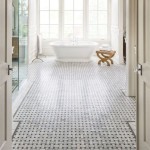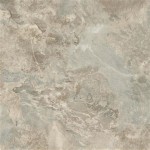Selecting the Ideal Area Rug for Dark Hardwood Floors
Dark hardwood floors offer a sophisticated, elegant foundation in any room. Their depth and richness evoke a sense of luxury and warmth. However, the inherent darkness can also create a feeling of enclosure if not properly balanced. An area rug becomes an essential element in mitigating this effect, offering an opportunity to introduce contrast, texture, and personality to the space. Choosing the right area rug for dark hardwood floors involves careful consideration of color, pattern, size, material, and style. The selection process should aim to complement the existing aesthetic while addressing practical concerns such as foot traffic and maintenance.
The Importance of Color Contrast
One of the primary considerations when selecting an area rug for dark hardwood floors is the contrast between the rug and the flooring. Dark floors tend to absorb light, and a rug that is too dark can exacerbate this effect, making the room feel smaller and less inviting. Opting for lighter colors will brighten the space and create a visually appealing contrast. Neutral tones such as ivory, cream, beige, and light gray are excellent choices. These colors offer a timeless elegance and work well with a variety of decorating styles.
Beyond neutral tones, incorporating colors with pops of vibrancy can inject personality and energy into the room. Consider using area rugs with shades of blue, green, or even subtle hints of yellow and orange. The key is to choose colors that complement the existing décor and personal preferences. For example, a room with neutral furniture might benefit from a rug with bolder colors, while a room with colorful furniture may be better suited to a more subdued rug.
When selecting a rug with multiple colors, pay attention to the underlying tones. A rug with cool tones, such as blues and greens, will create a calming and serene atmosphere, while a rug with warm tones, such as reds and oranges, will create a more inviting and cozy atmosphere. Understanding the impact of color temperature is crucial for achieving the desired ambiance in the room.
The use of patterns also plays a significant role in enhancing the visual impact. A rug with a bold geometric pattern can add a modern and dynamic element, while a rug with a subtle floral pattern can introduce a touch of traditional elegance. The size and scale of the pattern should be proportionate to the size of the room and the furniture within it. A large, intricate pattern can overwhelm a small room, while a small, repetitive pattern can get lost in a large room.
Material Considerations for Durability and Texture
The material composition of an area rug directly influences its durability, texture, and overall aesthetic. Different materials offer varying degrees of comfort, stain resistance, and maintenance requirements. Natural fibers such as wool, cotton, and jute are popular choices for area rugs, each with its unique set of advantages and disadvantages.
Wool rugs are renowned for their durability, softness, and natural stain resistance. Wool fibers have a natural crimp that allows them to bounce back from compression, making them ideal for high-traffic areas. Wool rugs also have excellent insulation properties, providing warmth and reducing noise. However, wool rugs can be more expensive than rugs made from synthetic fibers. It is also important to note that some wool rugs may shed initially, requiring frequent vacuuming.
Cotton rugs are a more affordable alternative to wool rugs. They are soft, lightweight, and easy to clean. Cotton rugs are available in a wide range of colors and patterns, making them a versatile choice for any room. However, cotton rugs are less durable than wool rugs and may be more prone to staining and fading. They are also not as resistant to moisture, making them less suitable for bathrooms or kitchens.
Jute rugs are made from natural plant fibers and offer a rustic, textured look. They are durable and relatively inexpensive. Jute rugs are a good choice for casual living spaces and can add a touch of natural warmth to a room. However, jute rugs can be rough underfoot and may not be as comfortable as wool or cotton rugs. They are also susceptible to staining and should not be used in areas with high moisture levels.
Synthetic fibers such as nylon, polyester, and polypropylene are also commonly used in area rugs. These materials are durable, stain-resistant, and easy to clean. Synthetic rugs are often more affordable than natural fiber rugs and are available in a wide range of colors and patterns. However, synthetic rugs may not have the same luxurious feel as natural fiber rugs. They can also be less environmentally friendly, as they are made from petroleum-based products.
The pile height of an area rug refers to the length of the fibers. A high-pile rug is plush and comfortable, while a low-pile rug is more durable and easier to clean. The choice of pile height depends on personal preference and the intended use of the rug. High-pile rugs are suitable for bedrooms and living rooms where comfort is a priority, while low-pile rugs are better suited for hallways and entryways where durability is more important.
Determining the Correct Size and Placement
Selecting the appropriate size of an area rug is essential for creating a balanced and harmonious space. A rug that is too small can look insignificant and out of place, while a rug that is too large can overwhelm the room. The size and placement of the rug should be determined by the size of the room and the arrangement of the furniture.
In living rooms, a common approach is to select a rug that is large enough to anchor the main seating area. This means that the front legs of the sofa and chairs should rest on the rug. This creates a cohesive and unified look. Alternatively, if the room is smaller, the rug can be placed entirely under the coffee table, creating a focal point in the center of the seating area.
In dining rooms, the rug should be large enough to accommodate the entire dining table and chairs, even when the chairs are pulled out. This ensures that the chairs remain on the rug when in use, preventing them from scratching the hardwood floors. A general guideline is to add at least 24 inches to each side of the table to allow for comfortable chair movement.
In bedrooms, a common arrangement is to place the rug under the bottom two-thirds of the bed, with the rug extending beyond the sides and foot of the bed. This creates a soft and warm landing space for your feet when you get out of bed. Alternatively, two smaller rugs can be placed on either side of the bed, providing comfort and visual interest.
For hallways and entryways, consider runners. Runners should be long enough to cover the length of the hallway or entryway, but not so wide that they obstruct traffic flow. The width of the runner should be proportionate to the width of the hallway or entryway. Using a rug pad beneath the rug is highly recommended, no matter the setting. Rug pads provide cushioning, prevent the rug from slipping, and protect the hardwood floors from scratches and wear.
Ultimately, the selection of an area rug for dark hardwood floors is a matter of personal taste and style. By carefully considering color, material, size, and placement, one can create a space that is both visually appealing and functionally comfortable. Careful consideration of these factors will contribute significantly to the ambiance and overall aesthetic of the room.

These Are The Best Rug Colors For Dark Floors

12 Types Of Area Rugs For Dark Wood Floors Anne Thimble

What Colour Rugs Go With A Dark Or Light Wood Floor Tsar Carpets

20 Best Rugs For Your Dark Wood Floors

What Color Rug Goes With Dark Wood Floors Rea

Colorful Geometric Living Area Rugs For Dark Wood Floors

11 Best Rugs For Dark Wood Floors Nish

Decorating Tips For Homes With Hardwood Floors Auten Wideplank Flooring

Best Color Furniture For Dark Hardwood Floors The Morris Mansion

Floor Care Sergenian S Coverings







